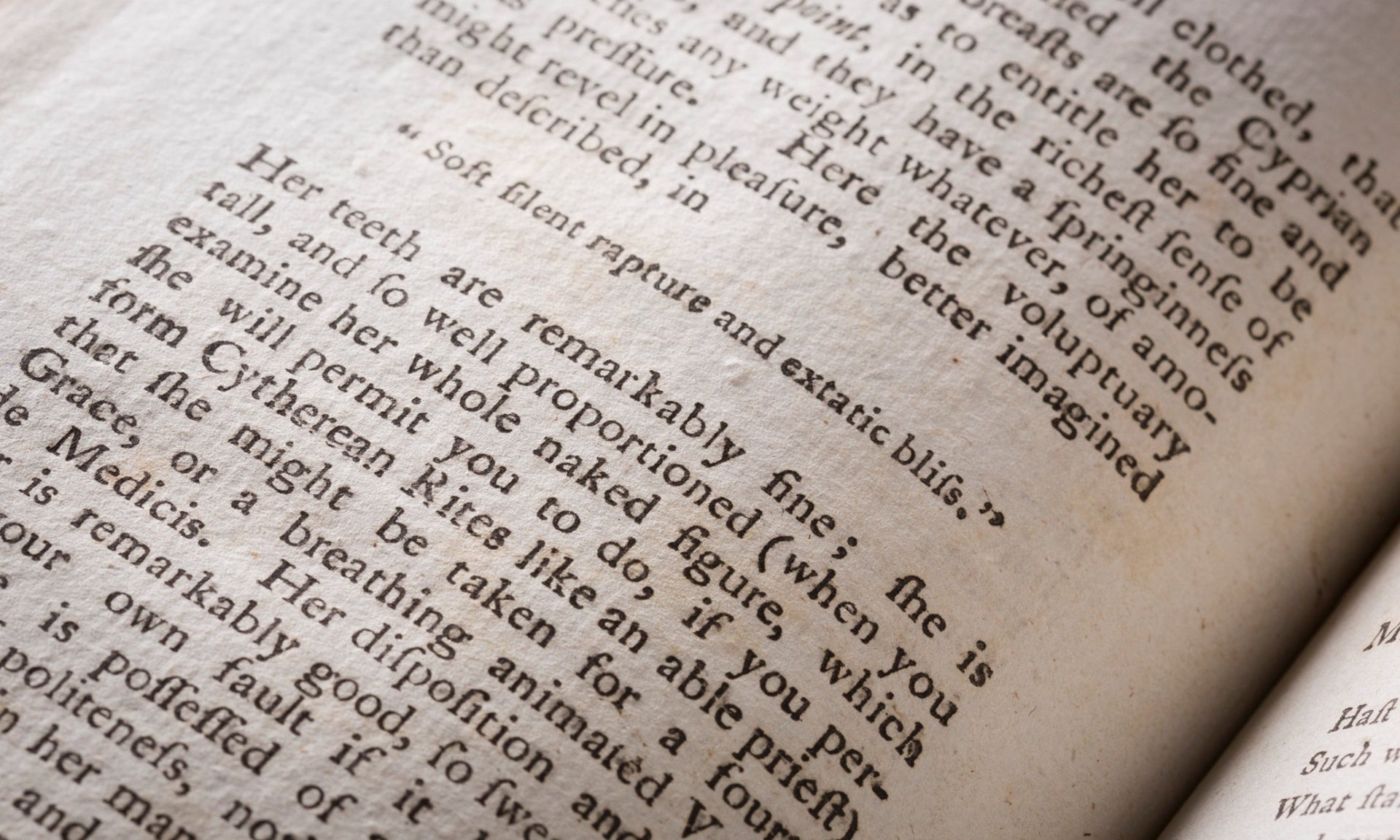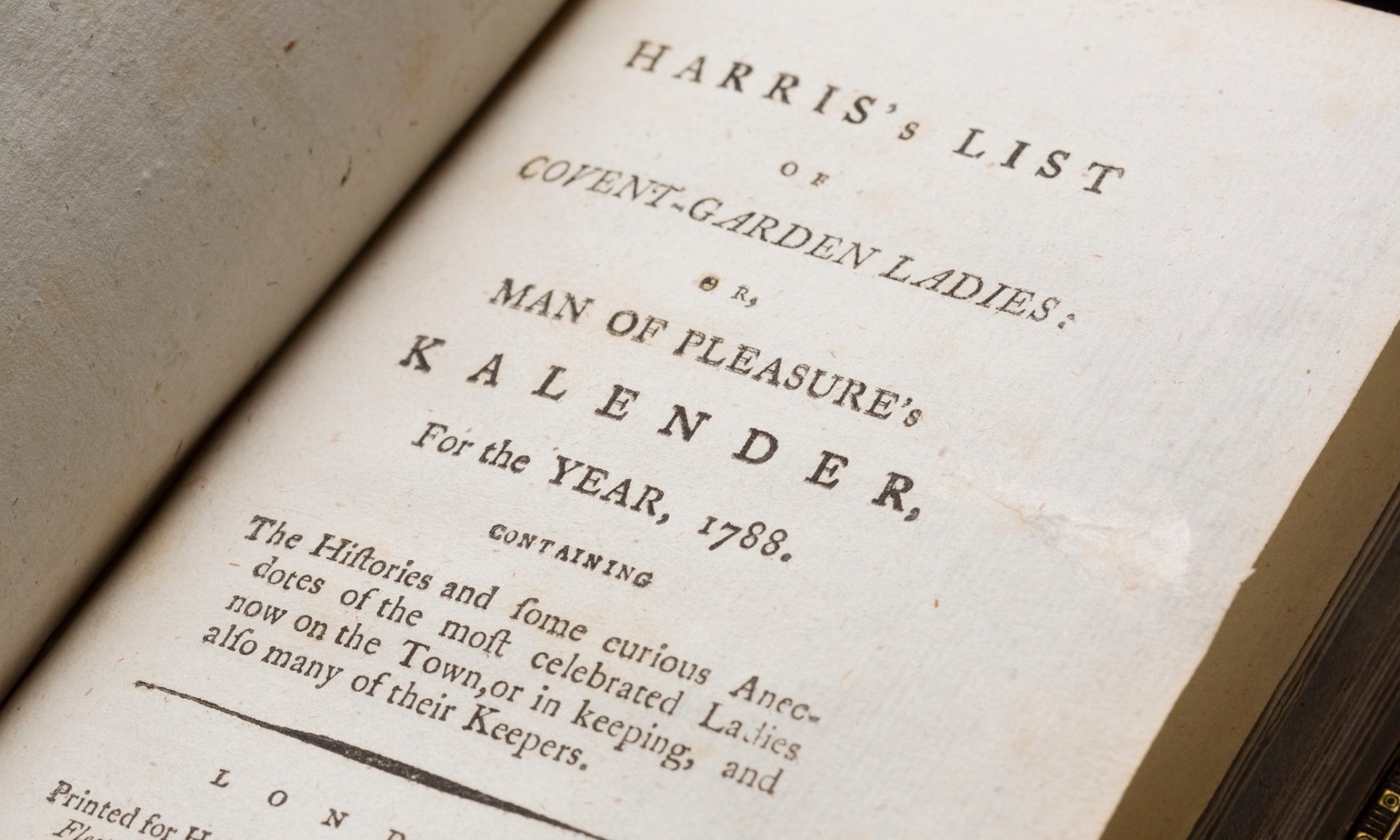Harris' List of Covent Garden Ladies: Georgian guide to London sex workers acquired by Wellcome Collection
Booklet included the names, brothel addresses and lofty descriptions of prostitutes' physical appearance and skills

Your support helps us to tell the story
From reproductive rights to climate change to Big Tech, The Independent is on the ground when the story is developing. Whether it's investigating the financials of Elon Musk's pro-Trump PAC or producing our latest documentary, 'The A Word', which shines a light on the American women fighting for reproductive rights, we know how important it is to parse out the facts from the messaging.
At such a critical moment in US history, we need reporters on the ground. Your donation allows us to keep sending journalists to speak to both sides of the story.
The Independent is trusted by Americans across the entire political spectrum. And unlike many other quality news outlets, we choose not to lock Americans out of our reporting and analysis with paywalls. We believe quality journalism should be available to everyone, paid for by those who can afford it.
Your support makes all the difference.In Michael Faber’s novel The Crimson Petal and the White the male protagonist peruses a surprisingly un-grubby little book listing (with alarming detail) the different prostitutes around London and what a gentleman in pursuit of pleasure might expect from them.
Now, a copy of the Georgian directory Faber’s fictional Victorian creation must surely be based upon has been acquired by the Wellcome Collection for an undisclosed five figure sum.
Harris’ List of Covent Garden Ladies was updated each year between 1757 and 1795 and sold a staggering 250,000 copies – a huge number for a book of that time.
The copy acquired by the Wellcome Collection from a London dealer dates from 1788 and contains a number of scribbled annotations and asterisks which suggest it was well used in its day.

An introductory page claims it contains “the histories and some curious anecdotes of the most celebrated ladies now on the town.”
The printed booklet, which would have originally cost half a crown, describes sex workers in what, to a modern reader, might appear to be surprisingly lofty terms.
On example reads: “If such a bloom as would the bid the damask rose look pale, united with the activity and sprightliness of two and twenty, can afford pleasure; if well-formed limbs, if a port so nobly armed as would bid defiance to any attack…if all these charms combined can serve for temporary enjoyment here you are sure to meet it.”

Another: “Her teeth are remarkably fine; she is tall, and so well proportioned (when you examine her whole naked figure, which she will permit you to do if you perform Cytherean Rites like an able priest) that she might be taken for a fourth Grace, or a breathtaking animated Venus D’Medici.”
Full names of the women are obscured by dashes but the listings include addresses of brothels, prices and details of any specific services they performed.
Harris's List was not actually written by a man named Harris at all, but is normally credited to an Irish poet named Samuel Derrick.
Harris was a notorious London pimp who allowed Derrick the use of his name and his insider information on the ladies of the town in return for a one-time fee.
Derrick, who took up the enterprise having fallen on hard-times, became increasingly wealthy as a result, and Harris became famously bitter.
Some historians have suggested the book was fictional - read simply as pornography -, but Richard Aspin, head of research and scholarship at the Wellcome Collection, disagrees.
“My feeling is that behind what may be entirely false and repeatedly changed names, these were real people at real addresses. But it may certainly be that many who would hesitate to spend two guineas on their company might be happy to curl up in an armchair with the guide for half a crown,” he told The Guardian.
The Wellcome Collection will house the 1788 copy as well as the only surviving 1787 guide. Neither will be displayed for conservation reasons but the book has been fully digitised on the Wellcome Collection’s website (see above).
Join our commenting forum
Join thought-provoking conversations, follow other Independent readers and see their replies
Comments